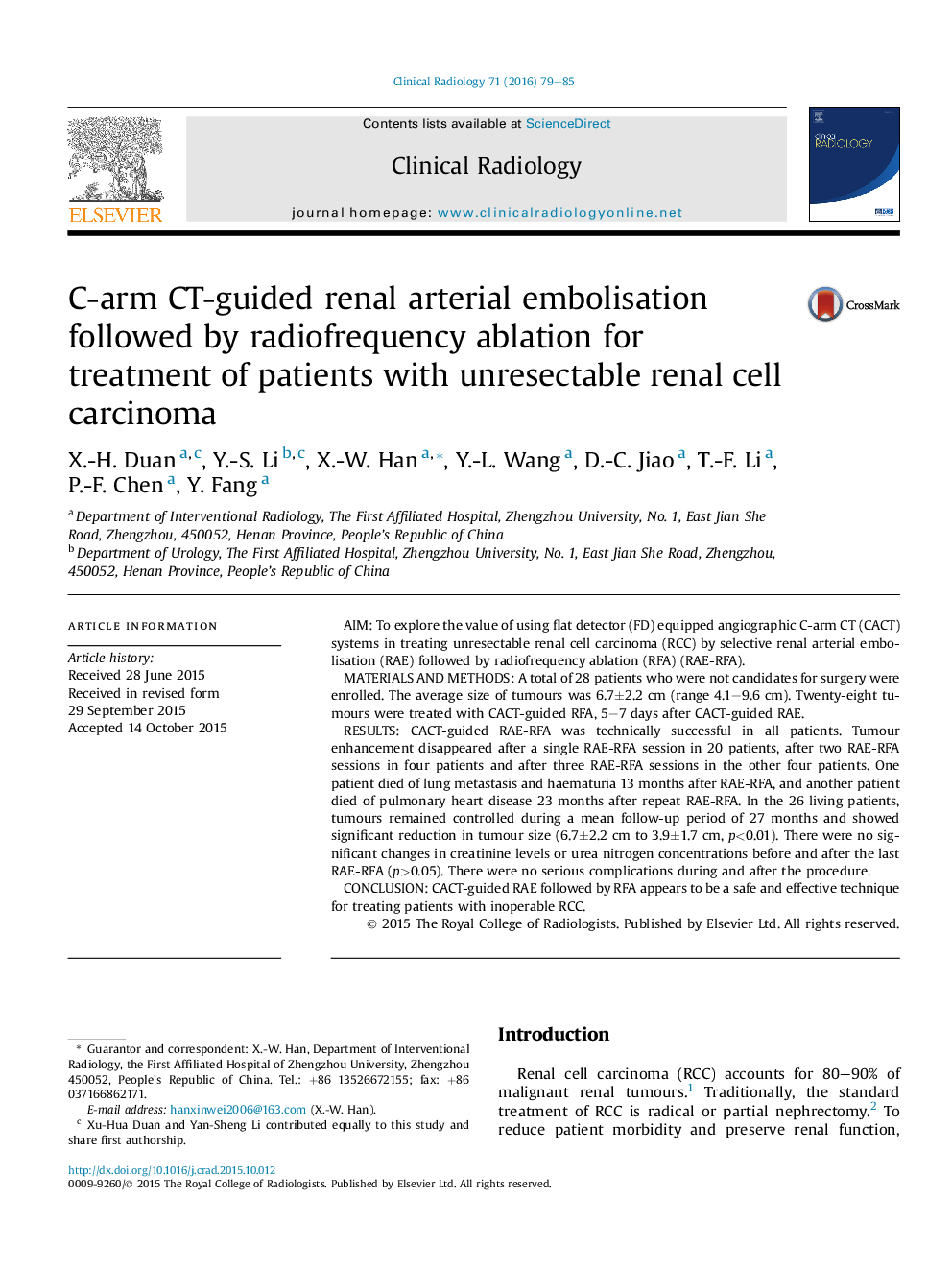| کد مقاله | کد نشریه | سال انتشار | مقاله انگلیسی | نسخه تمام متن |
|---|---|---|---|---|
| 3981446 | 1257683 | 2016 | 7 صفحه PDF | دانلود رایگان |

• Selective RAE combined with RFA (RAE-RFA) is used to treat unresectable RCC.
• We assessed the C-arm CT (CACT) based needle guidance system to perform RAE-RFA.
• Tumors were controlled and reduced in size following CACT-guided RAE-RFA.
• No significant changes in renal function occurred post-CACT-guided RAE-RFA.
• CACT-guided RAE-RFA for treating RCC appears to be a safe and effective technique.
AimTo explore the value of using flat detector (FD) equipped angiographic C-arm CT (CACT) systems in treating unresectable renal cell carcinoma (RCC) by selective renal arterial embolisation (RAE) followed by radiofrequency ablation (RFA) (RAE-RFA).Materials and methodsA total of 28 patients who were not candidates for surgery were enrolled. The average size of tumours was 6.7±2.2 cm (range 4.1–9.6 cm). Twenty-eight tumours were treated with CACT-guided RFA, 5–7 days after CACT-guided RAE.ResultsCACT-guided RAE-RFA was technically successful in all patients. Tumour enhancement disappeared after a single RAE-RFA session in 20 patients, after two RAE-RFA sessions in four patients and after three RAE-RFA sessions in the other four patients. One patient died of lung metastasis and haematuria 13 months after RAE-RFA, and another patient died of pulmonary heart disease 23 months after repeat RAE-RFA. In the 26 living patients, tumours remained controlled during a mean follow-up period of 27 months and showed significant reduction in tumour size (6.7±2.2 cm to 3.9±1.7 cm, p<0.01). There were no significant changes in creatinine levels or urea nitrogen concentrations before and after the last RAE-RFA (p>0.05). There were no serious complications during and after the procedure.ConclusionCACT-guided RAE followed by RFA appears to be a safe and effective technique for treating patients with inoperable RCC.
Journal: Clinical Radiology - Volume 71, Issue 1, January 2016, Pages 79–85